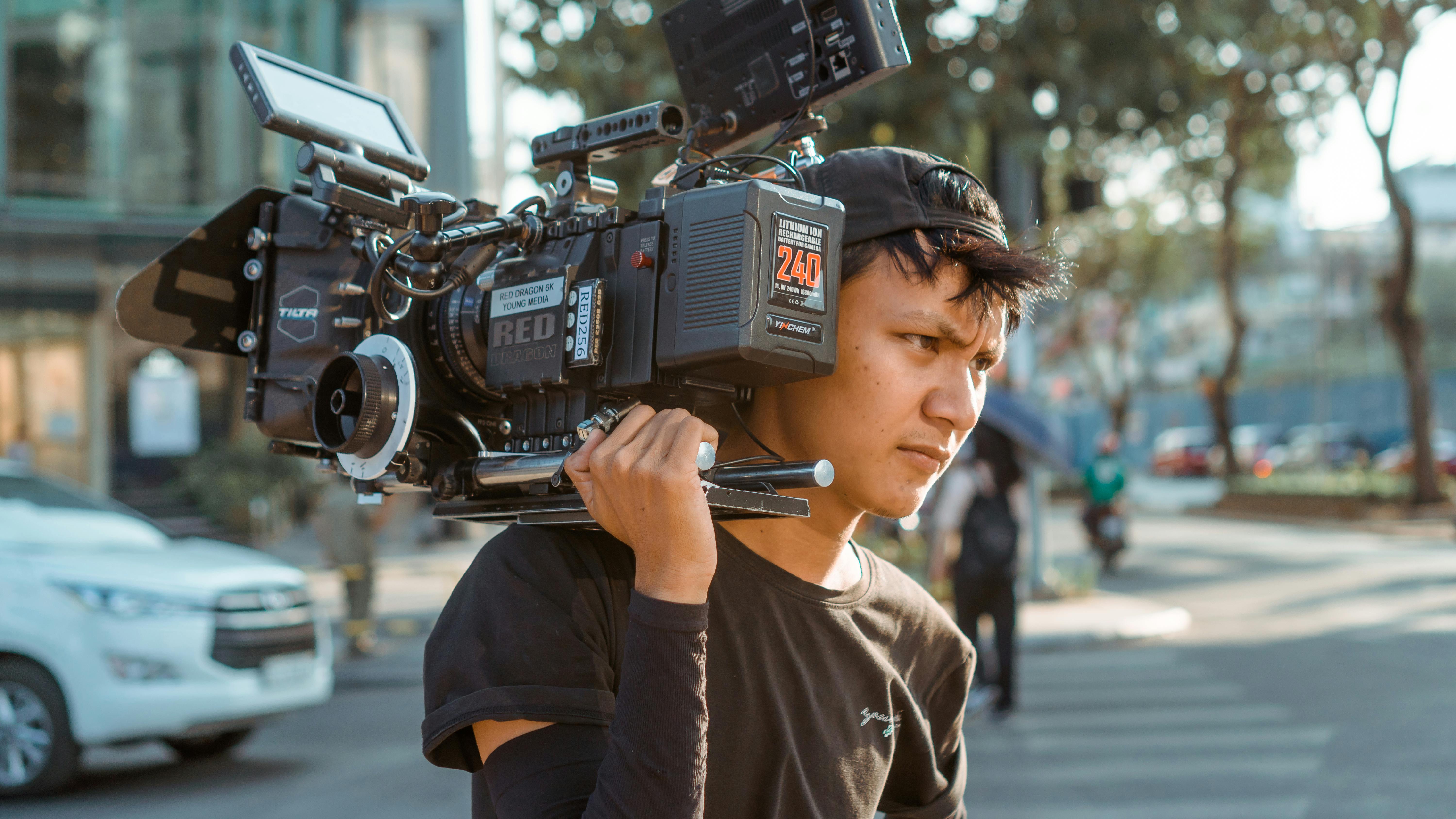Advances in technology will send humans to Mars in the near future. Internet of things, 5G, artificial intelligence, automated driving, etc., probably no one is able to list all the new technologies that are emerging. The complexity of the technological world is wonderful but just as bewildering and difficult to comprehend. However, researchers, engineers and technicians only need to concentrate on their own part of the job. Complex robots are made up of smaller functional units that are manageable by the respective professionals. They are guided by scientific texts and in the mind. Despite the complexity of the technologies, they will ultimately be traced back to simple origin in scientific texts.
Wikipedia defines technology as “Technology is the sum of techniques, skills, methods, and processes used in the production of goods or services or the achievement of objectives, such as scientific research.” In bing.com search, technology is defined as “the application of scientific knowledge for practical purposes, especially in industry.” The definitions are broad, apparently to include all the useful ways humans accomplish something. In fact, technology is itself a broad term with many valid definitions. Both definitions are correct in the sense that they describe facts. But they do not explain the meaning of terms like “techniques”, “application” and “scientific knowledge”, which are vague terms and could involve everything in the universe.
Since we define science in terms of texts in the paper “A New Definition of Science: The Textual Basis Representing the Real World”, technology must also be defined in terms of texts due to its scientific nature. Science and technology are closely related and inseparable in the modern world.
1. Scientific texts: the core of technology
We consider texts as the core of science, which should also be at the core of technology due to the essence of the very nature of science and technology. Now that we’re not repeating the textual nature of science/technology, interested readers can check out our “language: the core of science” article.
Science is capable of representing everything, including human behavior. Not only natural phenomena are represented and accumulated, but also human activities. The procedures, methods, details of achievements are recorded in texts, which are then established as representations. With textual representations, human activities are organized, classified, and based on existing known technologies.
Technology Features
Usually, technology is seen from the angle of its effect on societies, such as its relationship with culture, its practical use, its relationship with the economy, politics, etc. These are more its manifestos than its essence. They are non-textual in nature or focus on non-texts. Attributing the characteristics of technology to various aspects of societies not only complicates the problem, leading to endless interactions, but also distances people’s intentions from the true nature of technology.
Faced with the complexity, the variations of the ubiquitous and ever-changing technologies, we must reflect deeply on the characteristics common to all the technologies that texts possess. Represented by texts, technology acquires its essential characteristics common to all technologies.
Technical documentation
Methods, skills, materials, procedures, principles, etc., must be documented for understanding, learning, communication, and recording purposes. User manuals and technical specifications are often the first thing customers and engineers need, either during product shipment or during product development stages. Technical documents even describe a product more accurately than the actual operations of the product. Despite the complex operations, the deviation in the operating conditions and by different people, abundant materials, changing personnel, the documents are relatively stable, simple, accurate, reliable and explanatory.
Once again, it must be emphasized that scientific texts have an effect on the mind. Technical documents should keep in mind and not equate to technological texts in mind.
2. Differences between science and technology
It is necessary to find the differences between science and technology. Although they have the essential nuclei, their appearances and emphases are different to account for various aspects of the human world.
Science and technology have similar branches and knowledge. The main difference between science and technology is their goal and objective. The purpose of science is to observe and explain, while technology aims to act and make changes. Their direction is opposite to each other. Science is more observational, while technology emphasizes action. The same texts can be considered as science or technology depending on the objective and use. For example, the law of motion is itself a science, but it becomes technology when it is used to make and operate machinery.
Technology is closely associated with the man-made world. Human activities have changed the appearance of the world and the way people live. These are the direct result of technologies, although it can also be said that people applied science to achieve all of this. Intuitively, science is a deeper and more basic level of knowledge, while technology is more associated with direct applications. Science tends to be fundamental while technology tends to be detailed. But the texts play an equally central role in their formations.
Today, information spreads instantly; products are transported quickly. People increasingly lived in environments surrounded by machine-made products and constructions. It became easier for people to achieve their goals using existing knowledge and tools. On the other hand, many curiosities can be answered by entering questions into search engines, in seconds. It seems that everyone has enough knowledge. All one needs is to take action. As a result, more people have become action oriented, the term “technology” is becoming more popular than the term “science”.
3. The definition of text-based technology
Regarding the essential nature and differences between science and technology, we now provide a new definition of technology as:
The scientific texts that guide human activity.
This definition contains two points:
First of all, technology is scientific texts.
Second, these texts are used as a guide.
Our definition is not intended to override current definitions. Instead, we see from a different angle, focusing on a deeper level, locating ourselves in the text-centered model of the world.
technology usability
In general, human activities are oriented to a purpose. Therefore, the technology often has practical applications. But the scope of the application varies depending on the specific technologies. Furthermore, a technology that is useful at one time or for some people may not be useful at another time or for other people. Activities can be beneficial or bad for society.
Possible extension of the definition
Animals and machines could use technology in the future and probably today, such as AI. In such cases, scientific texts exert their effect not directly through human activities, but through animals or machines. His use of technology is an imitation of human intelligence, with no essential differences. The definition could be extended to all human and non-human activities guided by scientific texts.
Unifying non-text technology with text technology
People might argue that illiterate societies and even animals possess some kind of technology, albeit not as advanced as the modern form. Without getting into a deep confusion with endless examples, some of them ambiguous, we focus on the principles. Sequentiality, clarity, and representation of reality are the three defining characteristics of science. True sense modern technology also possesses these characteristics. In essence, technologies in illiterate societies also arose from sequential minds with scientific properties in primitive form, which manipulate non-texts instead of texts, in a less efficient/effective way. Scientific texts actually demonstrate these properties, facilitate visual processing, and advance the capacity of the human mind.
4. A text-centered model of science and technology
Now we can propose a text-centered model of science and technology that starts from investigative observations, which lead to scientific-technological texts, which in turn lead to actions through appropriate application. That is, science and technology are both integrated into the texts. If the purpose is in the direction of non-text to text, focusing on deriving theories, these texts have more to do with science. If the purpose is in the direction of text to non-text, focusing on taking action, these texts are more about technology. The actions modify the environment, which becomes a new subject of observation, giving rise to the derivation of new scientific-technological texts. In this way, the scientific and technological activities form infinite iterations, surrounding the texts in the center.
5. Closing
Through this new definition, the nature of technology is disclosed. The relationship between science and technology is defined and integrated in the texts. The complexity of understanding the technology is reduced. A new foundation is provided for future discussion of our technological world.
By defining technology in terms of text, the scientific strengths of various writing systems will also determine their technological strengths.



